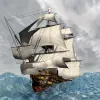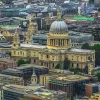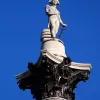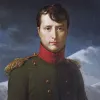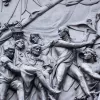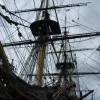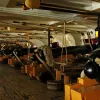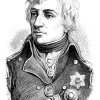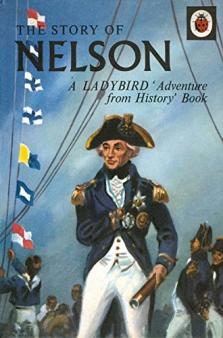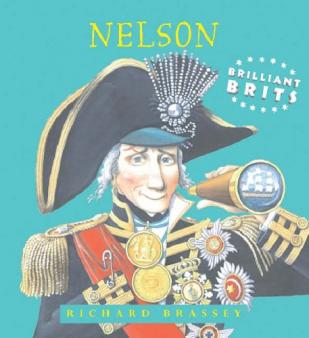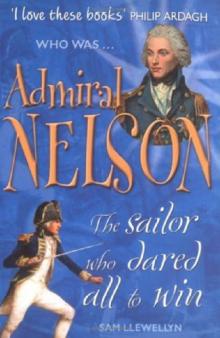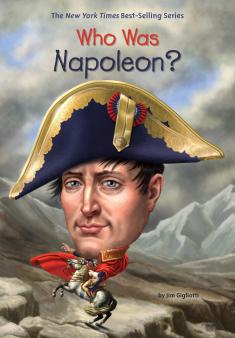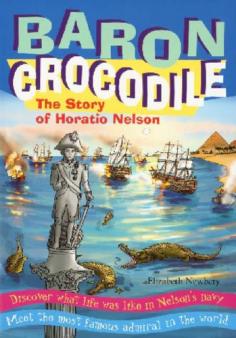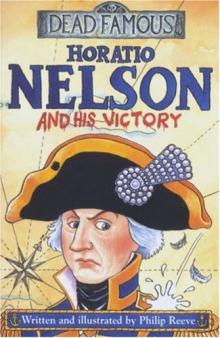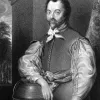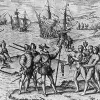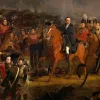TheSchoolRun.com closure date
As we informed you a few months ago, TheSchoolRun has had to make the difficult decision to close due to financial pressures and the company has now ceased trading. We had hoped to keep our content available through a partnership with another educational provider, but this provider has since withdrawn from the agreement.
As a result, we now have to permanently close TheSchoolRun.com. However, to give subscribers time to download any content they’d like to keep, we will keep the website open until 31st July 2025. After this date, the site will be taken down and there will be no further access to any resources. We strongly encourage you to download and save any resources you think you may want to use in the future.
In particular, we suggest downloading:
- Learning packs
- All the worksheets from the 11+ programme, if you are following this with your child
- Complete Learning Journey programmes (the packs below include all 40 worksheets for each programme)
You should already have received 16 primary school eBooks (worth £108.84) to download and keep. If you haven’t received these, please contact us at [email protected] before 31st July 2025, and we will send them to you.
We are very sorry that there is no way to continue offering access to resources and sincerely apologise for the inconvenience caused.
Horatio Nelson and the Battle of Trafalgar
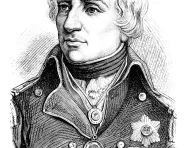
Why is Nelson famous?
Horatio Nelson was born in Norfolk in 1758. As a young child he wasn’t particularly healthy but he still went on to become one of Britain’s greatest heroes.
At the young age of 12, Nelson joined the navy on a ship captained by his uncle and his sea career went from strength to strength.
Nelson spent much of his life at sea and many years in battle but his most famous – the Battle of Trafalgar, in which he bravely led his British fleet to victory – was also his last.
Nelson died in 1805 and was so respected that he received a state funeral and was buried in St Paul’s Cathedral.
Top 10 facts
- Horatio Nelson was born on 29 September 1758 in Norfolk.
- Nelson’s father, Edmund Nelson, was the Rector of Burnham Thorpe, the small Norfolk village in which they lived. His mother died when he was only 9 years old.
- Nelson came from a very big family – huge in fact! He was the sixth of 11 children.
- Nelson showed an early love for the sea, joining the navy at the age of just 12 on a ship captained by his uncle.
- Nelson must have been good at his job because he became a captain at the age of 20. He was one of the youngest-ever captains in the Royal Navy.
- Nelson’s job helped him see the world. He travelled to the Caribbean, Denmark and Egypt to fight battles and also sailed close to the North Pole.
- Nelson was considered a great sailor so it’s hard to believe he suffered from seasickness all his life.
- Nelson was injured a number of times. During one battle, he was shot in the right elbow and had to have his arm amputated without anaesthetic by the light of a lantern!
- Nelson died in 1805 and was given a state funeral and buried at St Paul’s Cathedral.
- Nelson is regarded as one of Britain's most heroic figures, an inspirational leader and naval officer.
Timeline
- 1758Horatio Nelson was born on 29 September in Norfolk.
- 1771Nelson joins the Navy at the age of 12.
- 1787Nelson married Frances Nisbet on the Caribbean island of Nevis.
- 1793England become involved in the French Revolutionary Wars and Nelson is put in charge of the ship Agamemnon.
- 1798Nelson destroy’s Napolean’s fleets at The Battle of the Nile.
- 1801Nelson was promoted to Vice-Admiral.

- 1805The Battle of Trafalgar.

- 21 October 1805Nelson dies after being shot by a French sniper.
- 9 January 1806Nelson’s funeral takes place.
- 1840The building of Nelson’s Column begins.



Start your child on a learning programme today!
- Weekly English, maths & science worksheets direct to your inbox
- Follows the National Curriculum
- Keeps your child's learning on track
Did you know?
- Nelson’s Column is a very famous landmark in London’s Trafalgar Square. It was built to commemorate all that Nelson achieved. The work to build it started in 1840 and finished three years later in 1843. It cost £47,000. The famous monument was refurbished in 2006 at a cost of £420,000. The column is 51.6 metres tall from the bottom of the pedestal to the top of Nelson’s hat.
- Nelson didn’t always obey orders! Apparently during one battle he ignored orders to stop attacking the enemy. He used his bad eye to look through the telescope and claimed he couldn’t see the signal to withdraw!
- Nelson was a very clever sailor. One of his best victories was during the Battle of the Nile in 1798 where he tricked the French ships by sailing between the fleet and the shore and attacking them.
- During the Battle of the Nile, Nelson destroyed Napoleon’s forces. Napoleon was the French military leader – and probably Nelson’s greatest and most famous enemy!
- Nelson’s greatest-ever victory at the Battle of Trafalgar – which stopped Napoleon from invading Britain – was also his last. He was hit by a bullet and died hours later on the 21 October 1805.
- After he was killed, his body was preserved in brandy and transported back to England where he was given a state funeral.
- Would you believe the HMS Victory had an amazing 104 cannons?
Look through the galley below and see if you can spot the following:
- HMS Victory
- St Paul's Cathedral, Nelson's final resting place
- Nelson's column
- Napoleon
- Historic frieze at the base of Nelson's Column showing the death of the heroic Vice-Admiral at the Battle of Trafalgar
- HMS Victory in Portsmouth
- The Nelson Monument on Carlton Hill, Edinburgh
- Lord Nelson
Gallery
About
Considering the hero Nelson became, it’s hard to believe he was born a sickly child, so much so that he was quickly baptised after his birth as his family feared for his health.
Nelson lost his mother when he was only young so his father was left the tough job of bringing up a large family on his own as well as maintaining his job as rector of the small Norfolk village where they lived. His family situation and his early love for the sea might help explain why Nelson joined the Navy at only the age of 12 – on a ship captained by his uncle!
Nelson became one of the youngest ever captains in the Royal Navy and went on to travel the world from the Caribbean and Denmark to Egypt and the North Pole.
Nelson married Frances Nisbet in 1787 on the Caribbean island of Nevis.
In 1793 England became involved in the French Revolutionary Wars and Nelson was put in charge of the ship Agamemnon. During the war, Nelson helped to capture the island of Corsica, but he lost the sight in his right eye in the process.
Britain was at war during much of Nelson’s life so he spent many years in battle and during that time he became ill (he contracted malaria), was seriously injured – as well as the sight in his right eye he lost one arm and nearly lost the other – and finally, during his most famous battle, he lost his life.
In 1801, Nelson was promoted to Vice-Admiral.
Although Nelson was married to Frances, he fell in love with Lady Hamilton in Naples in Italy. They had a child together – Horatia – in 1801.
The Battle of Trafalgar is undoubtedly Nelson’s most famous battle – even though it turned out to be his last. On 21 October 1805 the French and Spanish fleets took to the sea and off the southern coast of Spain the Battle of Trafalgar took place.
As the battle was about to start, Nelson sent a signal from his flagship HMS Victory: "England expects that every man will do his duty". After only five hours the British captured 17 ships and burned one of the 33 French ships. But as the enemy shot onto the deck of the Victory, Nelson was hit by a bullet. He died three hours later but not before he realised the British fleet had been victorious. Apparently his last words were "Thank God I have done my duty."
HMS Victory was towed into Gibraltar and news of Britain’s victory and Nelson’s death was taken to England. Apparently King George III said in tears, "We have lost more than we have gained."
Nelson was so respected that he was given a state funeral and buried in St Paul's Cathedral. His coffin was escorted by 32 admirals, over 100 captains and 10,000 troops. A huge crowd waited to catch a glimpse of the funeral procession.
The Battle of Trafalgar, which cost Nelson his life, is still celebrated to this day. Trafalgar Day is celebrated in the UK and other commonwealth countries on the 21st October each year. The day was first celebrated in Trafalgar Square in 1896. In 2005, events all around the UK marked the 200th anniversary of the famous battle.
Related Videos
Just for fun...
- Play a game by clicking on the different objects within Nelson's cabin
- Get colouring the HMS Victory!
- Test your knowledge of the Battle of Trafalgar with this fun quiz
- Did any of your ancestors fight with Nelson at the Battle of Trafalgar? Find out by consulting the Trafalgar ancestors database
- Model-maker Tim Davies spent ten years building 2ft long model of the HMS Victory as she was on Jan 19, 1805 at 3.45pm. The model ship's sails contain over 20,000 stitches!
Children's books about Nelson and the Battle of Trafalgar
Find out more
- Read a children's guide to Nelson's life
- A children's introduction to Nelson and the Battle of Trafalgar from DKfindout!
- Read information about Britain's most famous naval leader and hero
- Find out what happened at the Battle of Trafalgar
- Information about the HMS Victory, built in Chatham Dockyard
- Find out about life on board the HMS Victory
- See photographs of the coat Nelson wore at Trafalgar
- See Nelson's diary and a painting of him explaining his attack tactics
- Look through a National Archives online exhibition to commemorate the bi-centenary of the Battle of Trafalgar
- Download a Trafalgar Day Powerpoint presentation from the 1805 Club
- See items related to Nelson on the National Maritime Museum website, including his hair in a pigtail, the saw with which his arm was amputated, the stockings he wore at the Battle of Trafalgar, a plaster cast of his face and a toy version of Nelson's funeral in wooden blocks
See for yourself
- Experience life on Nelson’s famous warship
- Visit Portsmouth’s historic dockyard
- Find out more about Nelson’s life and what he really looked like at The Royal Navy National Museum
- Visit Nelson’s world famous column in London
- Portraits of Nelson are collected in the National Portrait Gallery in London, or you can look at them online
- At the National Maritime Museum in Greenwich a whole gallery is dedicated to Nelson
- The Nelson Monument in Edinburgh was built between 1807 and 1815
